Gunung Mulu National Park
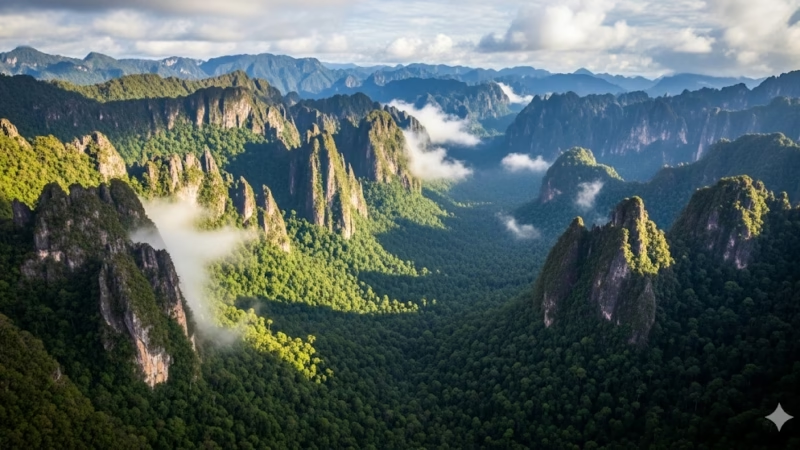
Mount Mulu | Mountain in Malaysia
Gunung Mulu National Park in Sarawak, Malaysian Borneo, is a UNESCO World Heritage Site famous for its rainforest, massive cave systems, limestone pinnacles, and diverse wildlife. Located near the Brunei border, this natural wonder is one of Malaysia’s top eco-tourism destinations.
“Heritage is our legacy from the past, what we live with today, and what we pass on to future generations.” – United Nations Educational, Scientific & Cultural Organization (UNESCO)
Mount Mulu (Malay: Gunung Mulu) is a sandstone and shale mountain. At 2376 m, it is the second highest mountain in the state of Sarawak, after Mount Murud.
Mulu World Heritage Area
This spectacular rainforest took 60 million years to create. It is one of the most important natural sites in South East Asia and will leave you in awe of its beauty. Discover the difference. Understand the importance.
Gunung Mulu National Park Overview
| Feature | Details |
|---|---|
| Location | Sarawak, Malaysian Borneo (near Brunei) |
| UNESCO Status | World Heritage Site since 2000 |
| Entry Fee | RM 30 (foreigners), RM 10 (locals), valid 5 days |
| Best Time to Visit | March – October (dry season) |
| Main Attractions | Deer Cave, Clearwater Cave, The Pinnacles, Canopy Skywalk |
| Wildlife | Hornbills, gibbons, bats, clouded leopards, diverse insects & reptiles |
| Getting There | Flights to Mulu Airport (MZV) or river boat from Marudi |
| Accommodation | Mulu Marriott Resort, park lodges, homestays |
History of Gunung Mulu National Park
Established in 1974, Gunung Mulu was created to protect Sarawak’s most unique limestone formations and rainforest biodiversity. In 2000, it was declared a UNESCO World Heritage Site due to its exceptional geological features, extensive caves, and biological diversity.
Top Attractions
1. The Mulu Caves
- Deer Cave – One of the largest cave passages in the world, home to millions of bats.
- Clearwater Cave – Longest cave system in Southeast Asia with an underground river.
- Lang Cave – Small but richly decorated with stalactites and stalagmites.
- Wind Cave – Known for its cool breezes and limestone formations.
2. The Pinnacles
Sharp limestone spires rising dramatically from the forest – reachable by a challenging trek.
3. Canopy Skywalk
One of the longest rainforest canopy walks in the world, offering breathtaking aerial views.
4. Rainforest & Wildlife
Over 3,500 plant species and rare animals like hornbills, gibbons, and clouded leopards.
Ticket & Entry Fees
The entrance ticket to Gunung Mulu National Park in Sarawak starts from RM10, and it is valid for 5 consecutive days, allowing plenty of time to explore caves, treks, and activities.
MULU WORLD HERITAGE 5 DAYS PASS
| Details | Ticket Price |
|---|---|
| Foreign Adult | RM 30 |
| Foreign Child | RM 10 (6 – 18 years) 5 and below no charge |
| Malaysian Adult | RM 15 |
| Malaysian Senior | RM 7 (60 years and above) |
| Malaysian Child | RM 5 (6 – 18 years) 5 and below no charge |
👉 Note: Adventure caving, Pinnacles trek, and guided tours require additional fees.
Tours & Activities
| Activity | Description |
|---|---|
| Guided Cave Tours | Explore Deer, Clearwater, Lang & Wind Caves with experienced guides |
| Adventure Caving | Crawl, climb, and wade through unlit passages for thrill-seekers |
| Jungle Treks & Night Walks | Discover rainforest trails and nocturnal wildlife |
| The Pinnacles Trek | Challenging 3D2N hike to razor-sharp limestone spires |
| Canopy Skywalk | Walk among the treetops on one of the world’s longest canopy bridges |
A Typical Day in Mulu
Each Mulu morning usually dawns with a clear sky and a temperature around 23 degrees. By early afternoon the temperature has risen to about 34 degrees and 60% humidity; around 13:00 – 17:00 it will start raining and the humidity increases to 90%. Showers may last 30 – 60 minutes, but after the rain the air is cool and fresh, the evenings are usually fine.
Mulu Survival Kit
| Item | Purpose / Notes |
|---|---|
| Non-slip closed footwear | Essential for trekking, caving, and slippery trails |
| Raincoat | Sudden rain showers are common in Mulu |
| Torchlight | For night walks, caving, and low-light areas |
| Water bottle | Stay hydrated during treks and tours |
| Insect repellent | Protect against mosquitoes and insects |
| Hat / Sweatband | Sun protection and comfort during long treks |
| Cash (RM) | No ATMs in Mulu; needed for local purchases |
| Personal 1st aid kit / medicine | Essential for emergencies and minor injuries |
| Face mask | Mandatory for all tours; NO MASK = NO TOUR |
| Hand sanitizer | Maintain hygiene, especially in remote areas |
| Hand gloves | Required for adventure caving or extreme tours |
| Digi / Tone WOW SIM card | For 4G signal and connectivity in the park |
How to Reach
- By Air: Flights from Miri, Kuching, Kota Kinabalu to Mulu Airport (MZV).
- By River: Scenic boat journey via Marudi and Long Terawan.
Where to Stay
| Category | Options | Description |
|---|---|---|
| Luxury | Mulu Marriott Resort & Spa | 5-star resort with modern comforts, spa, and riverside views |
| Budget | Park Lodges & Dormitories | Affordable rooms and dorms located near the park headquarters |
| Local Culture | Village Homestays | Stay with local families for an authentic cultural experience |
Best Time to Visit
- Dry Season (March–October): Best for trekking and cave exploration.
- Rainy Season (Nov–Feb): Lush scenery but possible trail closures.
Fast Facts & Highlights of Gunung Mulu National Park
General Information
- Area: 85,671 hectares
- Elevation: 27 m (floodplains) → 2,377 m (Mulu Summit)
- Topography: Flat floodplains, steep slopes, vertical limestone cliffs
- Rainfall: Avg. 4,500 mm/year; no real dry season
- Highest: April–May & October–November
- Lowest: July–September
- Temperature:
- Lowlands: 23–26°C
- Summit: 14–18°C
Biodiversity (Estimated)
- Plants & Fungi:
- 2,000 flowering plant species
- 450 fern species
- 1,700 mosses & liverworts
- 4,000 fungi species
- Animals:
- 122 mammal species
- 305 bird species
- 200 reptile & amphibian species
- 48 fish species
- 20,000+ insects & other invertebrates
Note: This is a dynamic list; continuous research adds more species.
Biodiversity vs Species Abundance
- Rainforests have high biodiversity (many different species) but low species abundance (small populations).
- Animals are shy and tend to hide; spotting them requires patience and quiet.
- Avoid wearing strong scents, making noise, or smoking—animals sense humans early.
World Heritage Status
Mulu is a natural World Heritage Site in Malaysia and meets all four UNESCO natural criteria:
- Outstanding example of major stages of Earth’s history
- Significant ongoing ecological and biological processes
- Important habitats for species of universal scientific/conservation value
- Exceptional natural beauty & phenomena
Caves & Geological Importance
- Classic underground geomorphology, 1.5+ million years of evolutionary history
- Giant doline “Garden of Eden” shows karst collapse process
- Exceptional study opportunities for cave faunas
- Energy transfer from forest to caves via bats & swiftlets
- Ancient invertebrate cave species
Scenic & Wildlife Highlights
- Deep canyons, wild rivers, rainforest-covered mountains, limestone pinnacles
- Millions of bats and swiftlets create a spectacular wildlife show
- Rich lowland & montane forests with high plant diversity & endemism
- One of the richest sites globally for palm species
- Home to 54 bat species and highly diverse cave fauna
Visitor Guidance
- Enjoy the park responsibly and protect this World Heritage treasure
- Follow rules for wildlife safety and conservation
Responsible Visitor Behaviour
| Letter | Guideline |
|---|---|
| A | Accept responsibility for the environment you travel in. |
| B | Be aware of your impacts on the environment and local community; minimize them. |
| C | Choose wisely when deciding which activities are right for you. |
| D | Don’t do things you would never do at home. |
| E | Explain to others why you behave positively. |
| F | Find out and learn more about Mulu. |
| G | Guide others by setting a good example. |
| H | Help protect Mulu for future generations. |
Visitor Safety Tips
- Follow instructions and heed warnings.
- Inform staff when you leave, your destination, and return time.
- Wear sturdy hiking shoes.
- Carry plenty of water and a snack.
- Bring your personal first aid kit.
Rules for Mulu’s Protection
It is an offense to:
- Enter the park without a permit.
- Fish inside the park.
- Kill, capture, poison, or disturb any animal.
- Cut, remove, or damage plants; light fires.
- Litter — carry all waste out.
- Bookings are essential for all guided walks.
Cancellation Policy
- Full refund: If trek canceled before leaving Park Office.
- No refund: Once trek starts (reasons: fitness, water levels, sickness, accidents).
- 50% fee: If you cancel within 24 hours of departure.
Guided Walks & Activities
| Activity | Duration | Details | Booking |
|---|---|---|---|
| Canopy Skywalk | 2 hrs | 480m long, world’s longest tree-based walkway; 10–30m above forest floor; view riverine forest, understorey, treetops, limestone cliffs | Daily departures; max 8 people per group; bookings essential |
| Night Walk | 2 hrs | Explore nocturnal wildlife; see species hunting, nesting, raising young | Starts 7:00–7:30 PM; bookings essential |
| Mulu Summit Walk | 4 days / 3 nights | 24 km climb to 2,377m; montane forests, pitcher plants, rhododendrons; basic forest huts; must carry own food/water/sleeping bag | Minimum 3 nights; guide and porter recommended; bookings essential |
| Camp 1 Overnight Trek | 1 night | For visitors with limited time; experience rainforest overnight; same arrangements as summit trek | Guide-led; bookings essential |
Contact Details
- Mail: P.O. Box 2413, 98008 Miri, Sarawak, Malaysia
- Tel: +60 85 792600
- Fax: +60 85 792605
- Email: enquiries@mulupark.com
- Web: https://mulupark.com/
💡 Key Reminders:
- All treks require advanced bookings and availability of guides.
- Guides are not porters or cooks — carry your own essentials.
- Forest between floodplains and Camp 1 is dangerous without a guide.
Unguided Walks & Trails – Gunung Mulu National Park
| Trail / Activity | Distance / Duration | Highlights | Notes |
|---|---|---|---|
| Botanical Heritage Trail | 1.5 km loop | Intro to plant evolution and tropical rainforest plant families | Branches left off Deer Cave path, 450 m from Park Office |
| Kenyalang Loop | Varies | Explore a quieter rainforest area; picnic-friendly | Unguided; meet Deer Cave tour guide later if desired |
| Paku Valley Loop | 8 km (5–6 hrs) | Discover birds, insects, ferns, fungi; chance for solitude | Concrete section along Melinau River can be slippery; small stream crossings; register plans with Security staff before heading out |
| Paku Waterfall | 2–3 hrs | Swim at waterfall on route to Deer Cave | Turn left toward Summit, then return same way |
| Long Langsat River Walk | 3–4 hrs | Walk along Sungai Melinau & Sungai Tutoh; swim in clear waters; meet local Penan community | Guide optional; pristine environment—carry out all rubbish |
| Kuala Litut + Camp 5 | 90-min boat + 3-hr walk | Overnight stay at Camp 5; well-trodden path | Day trips possible; booking of boat & sleeping space essential |
Frequently Asked Questions (FAQ)
Q1: How much is the ticket for Gunung Mulu National Park?
A: RM 30 for foreign nationals, RM 10 for Malaysians. Pass valid for 5 days.
Q2: Do I need to book tours in advance?
A: Yes, especially for the Pinnacles trek and adventure caving as spots are limited.
Q3: Can I visit Gunung Mulu without a guide?
A: Some trails are accessible independently, but caves and advanced treks require guides.
Q4: How many days should I spend at Gunung Mulu?
A: At least 3–4 days to explore caves, canopy walk, and treks.
Q5: What is the best way to reach Gunung Mulu?
A: Flying to Mulu Airport (MZV) is the most convenient option.
What is Mulu famous for?
Gunung Mulu National Park is justifiably famous for its limestone karst formations, some of the most spectacular caves on earth. Mulu is home to the world’s largest underground chamber (the Sarawak Chamber), the world’s largest cave passage (Deer Cave) and the longest cave in Southeast Asia (Clearwater Cave).
How to go to Mount Mulu?
Gunung Mulu National Park can only be reached by flight. Maswings offers daily flights to Mulu from Miri (30 minutes), Kuching (80 minutes) and Kota Kinabalu (55 minutes). Please visit Mulu National Park official website for more information to plan your trip there.
How hard is a Mulu hike?
The trail to the top is only 2.4 km long but rises 1200 metres to the viewpoint. The last section of the trail is near vertical with rope sections and ladders to climb. For many, the descent is more difficult and can take 5 hours or more.




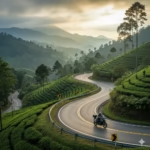
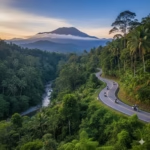
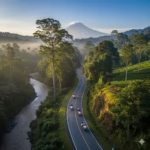

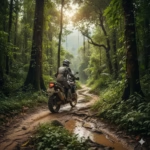

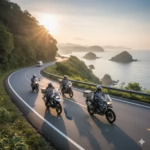
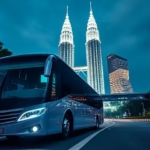

Comments are closed.